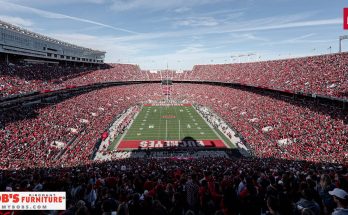Arch Manning’s recruitment was one of the most closely watched storylines in college football history, not only because of his famous last name but also because of the immense expectations placed on him as the next quarterback to carry forward a family legacy. From the moment his high school career began at Isidore Newman in New Orleans, analysts, scouts, and fans were eager to predict where he might eventually land. Programs like Alabama, Georgia, Texas, Clemson, and Ole Miss were naturally floated as destinations, but a surprising fact often overlooked in the noise of his recruitment was that Manning never even took a visit to Ohio State, one of the premier quarterback factories of the modern era. For a program that has produced NFL talent, competed for national championships, and consistently recruits at the highest level, the absence of a single visit from Manning is telling in several ways, both about his priorities and about the larger dynamics of college football recruiting in the NIL era.
At first glance, the fact that Arch Manning never stepped foot on the Ohio State campus during his recruitment seems odd. After all, the Buckeyes boast one of the most successful recent track records for quarterbacks, with C.J. Stroud, Justin Fields, and Dwayne Haskins all becoming first-round NFL Draft picks. Ohio State’s offensive scheme under head coach Ryan Day has been lauded for producing prolific passing numbers, and the team has consistently surrounded its quarterbacks with elite wide receiver talent. In the years surrounding Manning’s recruitment, Ohio State’s wide receiver room was widely regarded as the best in the country, producing NFL stars like Garrett Wilson, Chris Olave, Jaxon Smith-Njigba, and Marvin Harrison Jr. On paper, it would seem like a dream landing spot for a quarterback prospect of Manning’s caliber. Yet, despite the allure, Manning never even considered Columbus a stop on his recruiting trail.
The reasons behind this decision shed light not only on Manning’s personal preferences but also on how his recruitment was strategically handled. Unlike many highly touted prospects who take full advantage of official visits, explore multiple campuses, and immerse themselves in the glitz and hype of modern recruiting, Manning’s process was unusually quiet, deliberate, and controlled. His family, particularly his grandfather Archie and his uncles Peyton and Eli, played a large role in shaping the trajectory of his decision-making. The Mannings are known for valuing fit, stability, and long-term development over flash, and that philosophy clearly carried into Arch’s recruitment. The family made it clear from the beginning that they would not allow the process to become a circus. Coaches who had relationships with the Manning family understood that they had to approach with authenticity and patience rather than bombarding Arch with the typical recruiting theatrics.
This measured approach helps explain why programs like Ohio State, despite their pedigree, never gained traction. Ohio State was not without interest; the Buckeyes reportedly reached out early in the process and attempted to position themselves as a legitimate option. But there were factors working against them. First and foremost, the quarterback depth chart in Columbus at the time was stacked. C.J. Stroud was emerging as one of the best players in the country, and behind him, Ohio State had highly rated prospects waiting in the wings. For Manning, who was looking for a clear development path without an overcrowded quarterback room, this was likely a deterrent. While competition is a given at elite programs, the Mannings wanted to ensure that Arch would not be buried behind multiple five-star recruits before ever getting a chance to play.
Another critical factor was geography and comfort. The Manning family has deep Southern roots, and throughout the process it became evident that Arch felt most comfortable with programs in the SEC or those with strong ties to the South. Texas, while not in the SEC at the time of his commitment, had both the allure of a historic program and the pull of Steve Sarkisian’s offensive system, which was viewed as quarterback-friendly and aligned with the NFL. Georgia, Alabama, and Ole Miss were all natural fits as well due to their proximity, competition level, and coaching reputations. Ohio State, by contrast, represented a northern powerhouse with less cultural overlap with Manning’s upbringing. This is not to say Arch was unwilling to step outside of his comfort zone—his eventual commitment to Texas proves otherwise—but it illustrates that the decision was not purely about football facilities and depth charts.
Moreover, Manning’s recruitment was unique because NIL opportunities, though prevalent at the time, were not allowed to dominate the narrative. His family was vocal about ensuring that money would not be the deciding factor, despite living in an era where many top recruits openly weighed deals from collectives. While Ohio State has one of the strongest NIL infrastructures in the nation, it never became part of the Manning conversation. The family wanted to shield Arch from becoming a poster child for the NIL movement and instead focused on developmental fit. In this regard, Texas, with its promise of early playing time and a quarterback-centric offensive scheme, became a more natural fit than Ohio State.
It is also worth considering the broader recruiting strategy of Ohio State at the time. The Buckeyes have traditionally recruited quarterbacks who fit the mold of explosive playmakers with elite arm strength and mobility. While Manning is certainly a talented passer, his style has often been described as more methodical, cerebral, and precise—a player who thrives on reading defenses and playing within structure rather than relying on overwhelming physical traits. That does not mean he lacked athleticism or ability, but his reputation as a “classic quarterback” might not have aligned as seamlessly with Ohio State’s emphasis on dual-threat dynamism and high-volume passing in the Big Ten. Ryan Day and his staff likely understood that while Manning was an elite prospect, their system and recruiting board already featured quarterbacks who fit their vision more directly.
The fact that Manning never took a visit to Ohio State also reflects the limited number of visits he took overall. He and his family kept his recruitment remarkably low profile, avoiding the endless parade of photoshoots, commitment teasers, and social media drama that has become common in the modern era. His visits were carefully chosen, focusing on schools that met specific criteria rather than casting a wide net. Programs like Georgia, Alabama, Ole Miss, and Texas received attention because they checked the boxes that mattered most: high-level competition, offensive systems conducive to quarterback growth, proven coaching staff stability, and an environment that made him feel comfortable. Ohio State simply did not break into that shortlist, despite its obvious merits as a program.
This decision highlights a broader truth about recruiting: fit is subjective. To outside observers, Ohio State seemed like a no-brainer. But to Manning and his family, the program may not have aligned with the intangible factors they valued most. A family with as much experience in football as the Mannings does not get swept up in surface-level appeal. They are uniquely positioned to understand the nuances of quarterback development and the importance of environment. The fact that Ohio State, one of the most successful programs in the modern era, was never even visited by Arch underscores just how intentional the process was.
In the end, Manning’s commitment to Texas marked a turning point not just for the Longhorns but for the perception of recruiting in general. The choice sent shockwaves through the college football world, reaffirming that even in an era dominated by NIL money and social media hype, some recruits still prioritize fit and long-term vision. For Ohio State, missing out on Manning was hardly a setback, as they continue to recruit elite quarterback talent and maintain their place near the top of the college football landscape. But for fans and analysts, the fact that Arch Manning never even took a visit to Columbus remains an intriguing footnote in one of the most fascinating recruitments of all time.
What this ultimately shows is that recruiting decisions are not always about what looks best on paper. Ohio State checked many of the obvious boxes: a winning tradition, NFL quarterback production, elite receivers, and national exposure. Yet, none of those factors outweighed the elements that mattered most to Manning and his family. The absence of a visit is not an indictment of Ohio State but rather a testament to how deliberate the Manning family was in controlling the process and narrowing the scope to only those programs that genuinely aligned with their vision for Arch’s future.
As Arch Manning continues to develop his career at Texas and attempts to carve out his own legacy apart from his famous uncles, the fact that Ohio State was never part of his journey will remain an interesting detail. It is a reminder that college football recruiting, for all its spectacle and drama, still boils down to personal choices, family influence, and the pursuit of the right fit. And sometimes, even the most prominent programs in the country never get a foot in the door.

